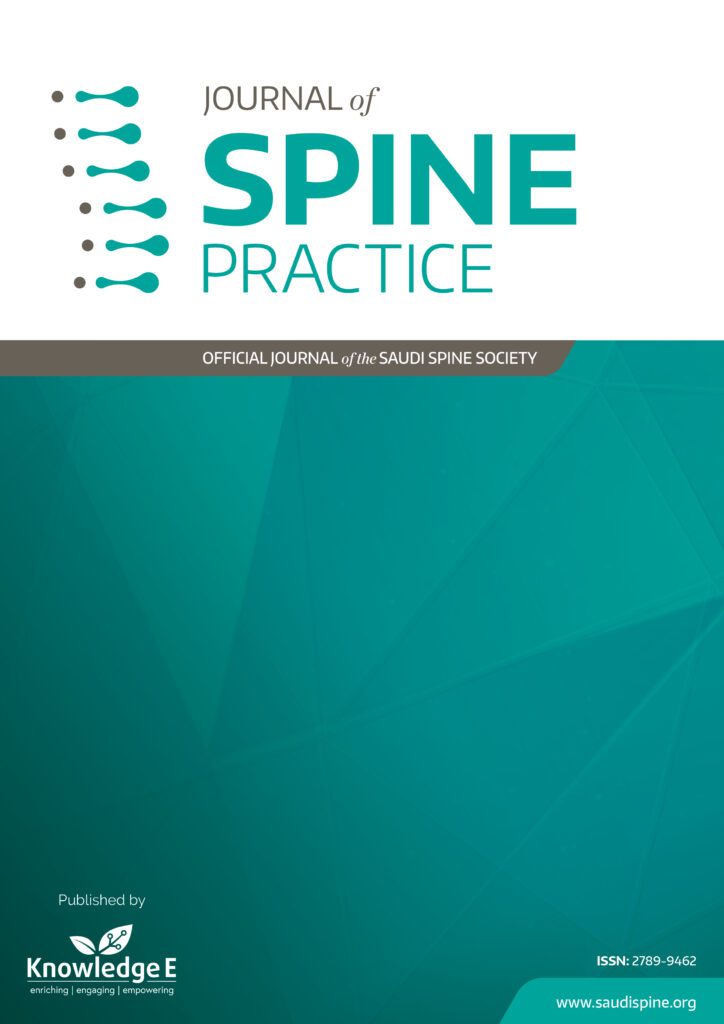
Journal of Spine Practice
ISSN: 2789-9462
Leading research in all spine subspecialties focusing on orthopaedic spine, neurosurgery, radiology, and pain management.
Predictors and Risk Factors of Surgical Site Infection (SSI) Following Adult Spine Surgery: A Cross-sectional Study
Published date: Nov 07 2021
Journal Title: Journal of Spine Practice
Issue title: Journal of Spine Practice (JSP): Volume 1, Issue 1
Pages: 6
Authors:
Abstract:
Introduction: Surgical site infection (SSI) is a major cause of morbidity and mortality as it is known to increase the length of hospital stay, revision surgery, and re-operation. Identifying patients at risk of developing SSI before surgery is the key to prevent SSI.
Methodology: This cross-sectional study was performed at the orthopedic department in King Khalid University Hospital, Riyadh, Saudi Arabia. SSIs were defined according to the Centers for Disease Control (CDC) case definition for SSI. Potential risk factors for postoperative wound infection were collected. Data were analyzed using the SPSS, version 23.0, and p-value < 0.05 was considered to be statistically significant.
Result: A total of 214 patients were included in the study and the incidence of SSI following spine surgery was 9.81% (N = 21). Obesity, diabetes, location of surgery, ASA score, duration of surgery, length of hospital stay, and location/level of operated vertebrae were all found to have a significant correlation with the SSI (p < 0.05).
Conclusion: Having a strong background of SSI risk factors and predictors is core to preventing the incidence of SSI and further enhance and optimize operative outcomes, as well as increasing the cost-effectiveness of the surgical intervention.
References: